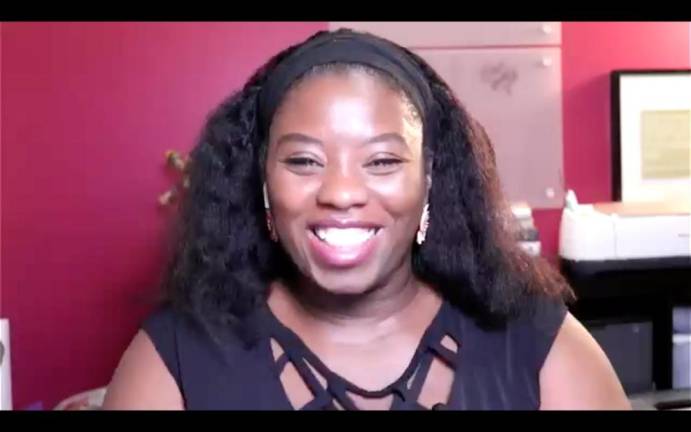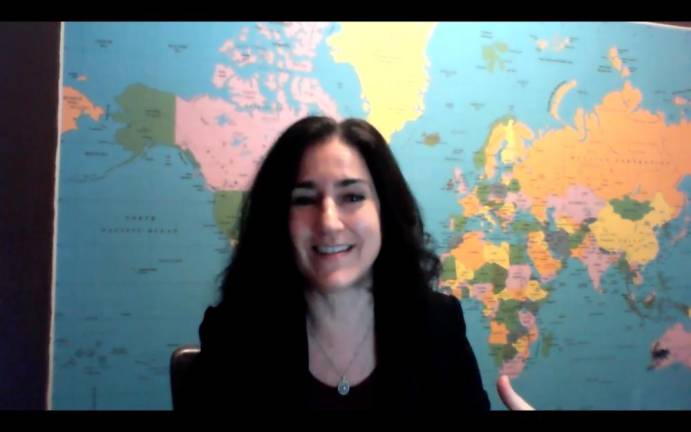Keep Up the Momentum, Advocates Urge Voters
At an event hosted by Women Creating Change, an analysis of the election and what lies ahead for New York


On Thursday evening, New Yorkers logged into a virtual event titled “Civic Action After the Election: What’s Next?” It was a live discussion breaking down the election and what it means for New York City and state going forward, hosted by Women Creating Change.
“This was a tremendous year for democracy, despite all the challenges,” Wendy Weiser, vice president of the Democracy Program at the Brennan Center for Justice at NYU School of Law, said in the discussion. “Our election system worked.”
Women Creating Change is a New York based non-profit which focuses on “increasing civic engagement among historically underserved women” across all five boroughs. The discussion was moderated by Angela Henry, Moderator at WCC. Along with Weiser, L. Joy Williams, a political strategist, advocate, and speaker, was a guest at the event. CEO and President of WCC, Carole Wacey, kicked off the discussion and reminded the participants that WCC is a non-partisan organization.
Wacey, Williams and Weiser acknowledged what they considered to be huge achievements over the election, from record-breaking voter turn out to having a woman in the White House, to the number of poll workers who signed up to work the election poll sites. Then they shifted their discussion to the next goal: building on the momentum of voter participation.
“Hopefully, this carries not only over to our municipal elections, which is coming up next year, but then also midterm elections and other elections,” Williams said.
Voter Turnout
Approximately 6.6 million people voted in New York City. They waited in hours-long lines and carved the word “vote” into their jack-o-lanterns. Williams and Weiser discussed how the voter turnout was partly because due to COVID-related circumstances, people worried that their vote wouldn’t be counted.
“People felt like the election was at risk at a level that we haven’t seen before and that we might not see again, if we don’t invest in it,” Weiser said. “We can’t just rely on [voter engagement] being self-sustaining, we need to sustain that because that really did make a difference.”
By investment, Weiser means to the Board of Elections. The few amount of polling sites around the city combined with the unprecedented voter turnout was part of why the lines were so long for voting early and on election day. Weiser and Williams want to capitalize on this enthusiasm from New Yorkers and shift it down to local politics.
“Our government should be participatory, right?” Williams said. “So how can people represent you if they don’t hear from you, and you’re not participating in the process, then you’re just letting people off to their own devices. And you never want people left to their own devices.”
So how to encourage people to participate? Henry asked just that to Williams and Weiser. The answer was to educate.
“Once they’re educated about it, you see people actually turn out, actually engaged. And that’s why you still saw this sort of overwhelming participation,” Williams said.
On the topic of the importance of local politics, Williams points out that now that the census has been completed, redistricting will take place in New York State for the first time since 2010.
“Redistricting has been this mystical thing that happens that only lawyers and elected officials and political scientists are allowed to participate in,” Williams said. “And that’s simply not the case. And so, we need to be able to educate the public about participation in that process.”
“It is a critical moment,” Weiser agreed. “It’s an opportunity for people to advocate for what their communities should look like and to get involved in the process and to start pushing from what those lines should be and what a fair representation should look like.”
Leading by Example
Both women spoke about how they believed that local civic engagement is made even more crucial by being in New York, and that the city needs to lead by example.
“People look here as an excuse to justify efforts to suppress the vote elsewhere. They say ‘What’s the problem that we created long lines here in Georgia, or here in Wisconsin, look at what they’re doing New York, they’re doing it too. This is not a big deal.’”
Williams called her fellow New Yorkers to action as she informed the viewers about the John R. Lewis Voting Rights Act of New York, renamed for the late Congressman John R. Lewis, which would add protections for eligible voters in New York.
“We can strengthen voter protection,” Williams said. “We can create a nonpartisan statewide database. We can raise standards about language access. We can put our own version of pre-clearance in place so that we can protect the rights of voters here in New York. And that’s what I’m talking about in terms of making the connection of what’s happening federally, but also what’s happening here locally.”
Williams said there are state senators signed on the bill, but not many assembly members.
“If you’re looking for something to take on as your next project, you can call your assembly member and ask them why they haven’t signed onto the Voter Rights Act for New York State yet,” Williams said. “I look forward to hearing elected officials complain about people calling in their office.”
“Once they’re educated about [voting], you see people actually turn out, actually engaged. And that’s why you still saw this sort of overwhelming participation.” Political strategist L. Joy Williams